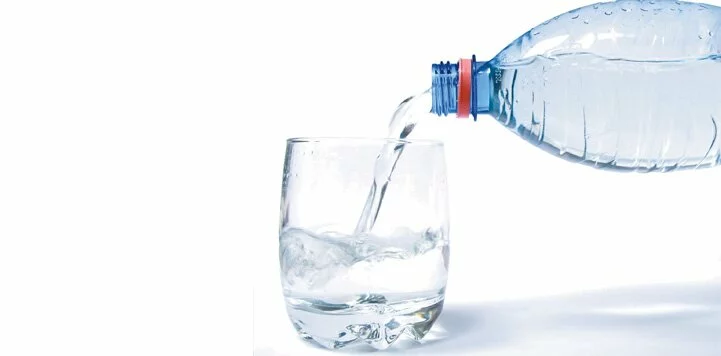Wellness
Health > Fight the Heat
|
|
|
Working up a sweat may not be your only heat related problem this summer. Beating the heat may take more than you realize!

Working up a sweat may not be your only heat related problem this summer. Beating the heat may take more than you realize!
Summer brings its fair share of delights but there are downsides to basking in the sun – though it may not feel like it at the time. As natives of a tropical country, we do not always realize when we have had too much time in the sun. We do not burn as easily as our Caucasian counterparts and deal with the rise in temperature much better. It is important, however, for us to know our limits. Here are some heat related illnesses that can make your summer extremely unpleasant.
It Boils Down to
Prickly heat or heat rash is one of the more annoying aspects of the heat. It commonly occurs in infants but can be found in adults who reside in hot and humid climates. It is a red or pink rash, which appears on areas that are usually covered by clothing. The body’s sweat ducts become blocked and this results in swelling, itching and general discomfort.
Overheating usually causes the rash. In young children, this can be caused by well meaning parents overdressing their kids. Remember, just because their hands and feet do not feel hot or clammy, does not mean that they are cold. Remove a few pieces of clothing and allow your child’s skin to breathe.
Heat rash appears in the form of tiny boils or pimples and can also appear on the back, neck and shoulders. These rash areas can be irritated by scratching or by tight clothing. If aggravated, a secondary skin infection can appear. Infection should be watched for and treated immediately. Some symptoms are: an increase in pain, swelling or redness around the rash, red streaks extending from the affected area, draining of pus from the rash, fever and chills and swelling lymph nodes on the neck, underarms and groin areas. If you have any of these symptoms, be sure to visit a doctor as soon as possible.
Prickly heat is much easier to get rid of, if there is no infection. Loosening your clothes or wearing less clothing can treat the irritating rash. The more room your skin has to breathe, the fewer blockages there are for your sweat ducts. Air dry your skin rather than wipe at it with a towel and aggravate the rash. Cooling lotions like calamine are also effective treatment. It is also important to ensure that your sleeping area is cool and dry.
Straight to the Head
Heat syncope or fainting occurs when you suddenly lose consciousness due to low blood pressure. Overheating causes this, which causes the blood vessels to dilate. This causes the fluids in the body to move toward the legs, in turn causing low blood pressure. The blood pooling can occur if you have been standing for a long period of time in an environment that is hotter than usual. Extensive and strenuous physical activity for a few hours before the loss of consciousness can also be a cause. Dehydration can also be a factor in causing heat syncope. Typical symptoms include: feeling dizzy; feeling light headed when you shift your stance; pale, clammy and moist skin.
You can quickly recover from heat syncope, by resting in a cool environment, consuming water or other fluids and re-hydrating yourself.
Exhausting Your Options
Heat exhaustion is caused by a person’s inability to perspire enough to cool the body. In general, it occurs when a person exercises extensively in hot weather, sweats out a lot of fluids and is unable to consume enough fluids to replace those that were lost. Two things can cause heat exhaustion – loss of electrolytes and dehydration.
Some of the symptoms of heat related exhaustion are weakness, dizziness, fatigue, headaches, nausea and moist skin. In mild cases, heat exhaustion can cause the person to faint. These cases can usually be treated at home and solved by drinking plenty of fluids and resting in a cool place. However, severe cases can lead to heatstroke, which requires proper medical attention.
Struck by the Sun
A heatstroke or sunstroke occurs when the body is incapable of regulating its own temperature, allowing the heat in the body to rise. There are two types of heat strokes - the classic heat stroke and the exertion heat stroke. The classic sunstroke can develop when a person is exposed to an unusually hot environment and their body is unable to cool down. This can develop over a period of days. Older and frailer people, and infants, are the most susceptible to this kind of sunstroke. Exertion heat strokes can develop when a person is exercising in a hot environment. This may cause them to perspire profusely. However, despite sweating, the body is unable to expel the heat required to cool it down. This may cause a person’s temperature to rise.
Symptoms of a heat stroke are unconscious spells, confusion, anxiety and restlessness, convulsions, difficulty in breathing, heavy sweating, total lack of sweat, red and dry skin and an extremely fast heartbeat. Both types of sunstroke can lead to severe cases of dehydration and in some cases the organs in the body may cease to function. Heat strokes are considered life threatening and should be regarded as a medical emergency.
|
|
|
|
|
|
|



